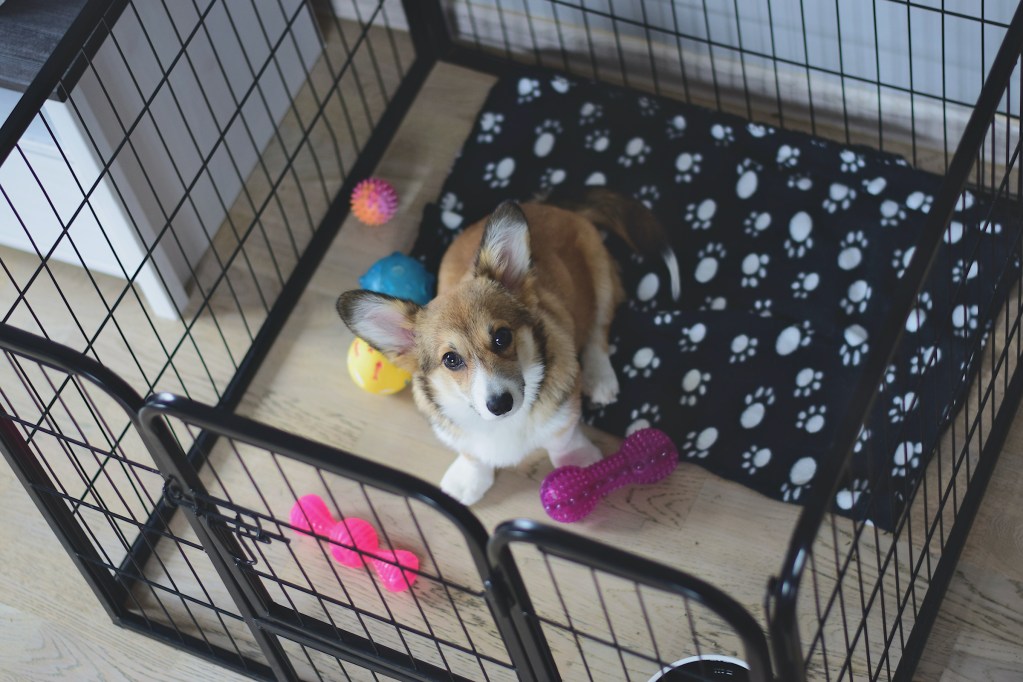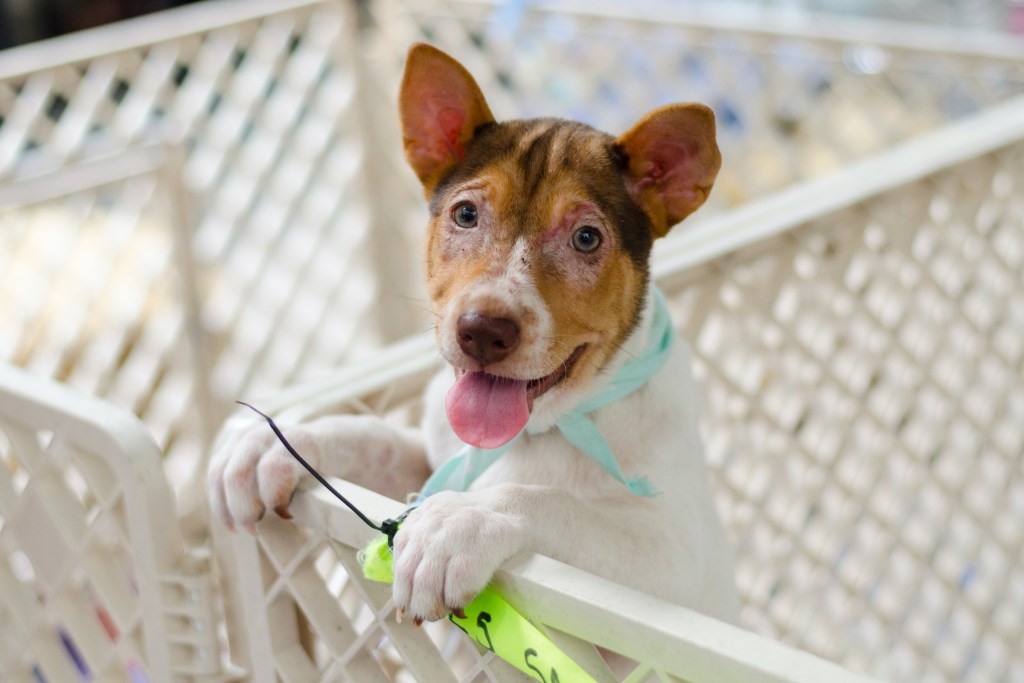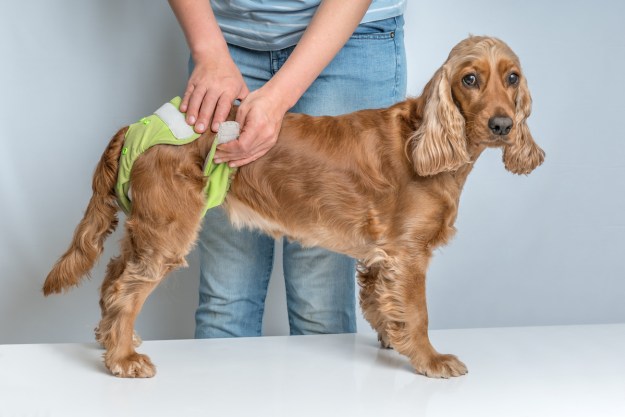Keeping your fur baby out of trouble around the house can be trickier than you might think. Tiny dogs can make big messes! Crates and playpens are just two ways pet parents keep their puppies safe and teach them where to sleep, play, and use the restroom; but these two helpful tools actually have quite different purposes. At first glance, however, crates look awfully small and more enclosed compared with pens. This may leave many pet owners wondering: Is a puppy playpen better than a crate?
Spoiler alert: Nope! While a plastic dog playpen leaves room for pups to run around and play, a canine-specific crate certainly has its time and place. But what’s the difference between a crate and a playpen for your puppy?

When to use a crate for your furry friend
While there are many uses that both a crate and puppy playpen can satisfy, a crate offers certain benefits that a playpen does not.
- Potty training: Appropriate-sized dog crates are recommended for potty training your puppy because of their limited space — a dog is not going to want to soil his own bed! A pen, by comparison, leaves more than enough room for a dog to relieve himself in one corner and play in another.
- Emotional support: There’s also an emotional benefit to using a crate. Dogs tend to have a natural affinity for enclosed spaces, or dens, where they know they’re protected from everything outside. In the same way that many people feel cozy and relaxed in bed, dogs enjoy having a safe space like a crate to retreat to. With a little training, this can easily become a favorite napping place for your pup as well — especially if you make her crate a little homier with a soft bed and even a cover.
Some dogs don’t mind being kept in their crate when their people are out, but a puppy may not be as patient, especially for long periods of time. Even though crates are supposed to be small to discourage accidents and messes, it won’t make much of a difference when a younger pup can’t control himself for nearly as long as a crated older pooch can. Teaching your dog to enjoy her crate can be a marathon, but it can have benefits for the rest of your dog’s life. Be patient!

When to use a puppy playpen around the house
Playpens differ from crates in size, structure, and function. A playpen is meant to keep your puppy secured in a small area of your home, whereas a crate doesn’t have to be fully enclosed at all.
A playpen is a group of small metal or plastic gates that you can arrange in a circle in your desired space. If you’re leaving your pet or keeping her enclosed for a long time, your pen should be spacious enough to add her food and water, as well as a bed or someplace comfy to rest. This may seem like it will require a lot of space, but many playpens come with removable pieces and can be resized as your puppy grows. Most playpens are easy to fold up and carry, too, so your puppy can hang out wherever you do.
One disadvantage to using a playpen is that it leaves enough room for your dog to relieve herself if she needs to. This is why potty training your pup is so, so important — for her health and your sanity!

Is a playpen better than a crate? Our final thoughts
Ideally, neither the crate nor the playpen is better than the other — they just have different purposes. A crate should be your dog’s designated space to relax and sleep (never a punishment!), while a playpen keeps her secure in a smaller area of your home.
Teaching your puppy how to tolerate, and hopefully enjoy, both a crate and a pen is sure to help you down the road. You’ll know your fur baby is safe and comfortable when using the playpen, and she’ll know she can go to the crate when she’s tired or needs a break. Just as each room in a house has its purpose, so do crates and playpens.
Although crates and playpens serve slightly different purposes, both are highly effective in raising an obedient, happy puppy. There are benefits and drawbacks to both cages and pens, and surely not all dogs will react perfectly to both — or even either! Be patient with your puppy through this super-important time in development and learning. She’ll adapt as she becomes familiar with her enclosure, but you can always help her out with some TLC and a couple of treats.
Editors' Recommendations
- 5 surefire ways to keep your dog off your bed and get a good night’s sleep
- Taking your dog’s collar off at night: Safe move or safety risk?
- Are Himalayan dog chews safe for your pet? Know this before you buy
- Does your dog drink a lot of water? Here’s when you should be concerned
- Is your puppy breathing fast while sleeping? Here’s when you should worry and how to help your dog




